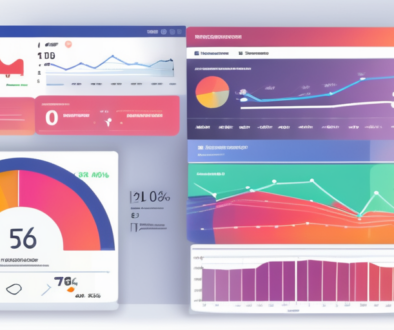Mastering Google Ads: A Step-by-Step Guide for Marketers
Google Ads is a powerful online advertising platform that enables businesses to reach their target audience and drive traffic to their websites. Understanding how Google Ads works and how it can benefit your digital marketing efforts is essential for any business looking to succeed in the online space. In this comprehensive guide, we will cover the basics of Google Ads, its importance in digital marketing, how it works, the different types of ads you can create, setting up a campaign, and optimizing your ads for maximum results.
Understanding Google Ads
The Basics of Google Ads
Google Ads, formerly known as Google AdWords, is an online advertising platform provided by Google. It allows businesses to create and display ads on Google’s search engine results pages (SERPs), as well as on its partner websites and mobile apps. Google Ads operates on a pay-per-click (PPC) model, where advertisers only pay when someone clicks on their ads.
With Google Ads, businesses can target specific keywords and display their ads to users who are actively searching for products or services related to their business. This level of targeting ensures that businesses can reach potential customers at the right moment, increasing the likelihood of conversion.
Importance of Google Ads in Digital Marketing
Google Ads plays a crucial role in digital marketing strategies for businesses of all sizes. Here are some key reasons why Google Ads is essential:
- Increased Visibility: Google is the most widely used search engine, with billions of searches conducted every day. By advertising on Google Ads, businesses can increase their visibility and reach a vast audience.
- Targeted Audience: With Google Ads, businesses can choose the keywords and demographics they want to target. This targeting capability allows businesses to focus their advertising efforts on the most relevant audience, leading to higher conversion rates.
- Measurable Results: Google Ads provides detailed analytics and reporting features, allowing businesses to track the performance of their campaigns. This data-driven approach enables businesses to make informed decisions and optimize their ads for better results.
Furthermore, Google Ads offers a variety of ad formats to suit different business goals and objectives. Businesses can choose from text ads, image ads, video ads, and even interactive ads. This flexibility allows businesses to create engaging and visually appealing ads that capture the attention of their target audience.
In addition to its targeting capabilities, Google Ads also offers advanced features such as remarketing and audience targeting. Remarketing allows businesses to show ads to users who have previously visited their website or interacted with their brand. This helps businesses stay top-of-mind and encourages potential customers to return and complete a purchase.
Moreover, Google Ads provides businesses with the ability to set a budget and control their advertising costs. Advertisers can set a daily budget and adjust bids for specific keywords to ensure that they are getting the most out of their advertising budget. This level of control allows businesses to optimize their campaigns and maximize their return on investment.
In conclusion, Google Ads is a powerful advertising platform that offers businesses the opportunity to reach a vast audience, target specific demographics, and track the performance of their campaigns. With its variety of ad formats, advanced targeting options, and budget control features, Google Ads is an essential tool in any digital marketing strategy.
How Google Ads Work
The Google Ads Auction Process
The Google Ads auction is a fascinating and intricate process that determines which ads are displayed on the Search Engine Results Pages (SERPs) and in what order. When a user enters a search query, Google’s algorithm goes to work, carefully assessing the advertisers’ bids, ad quality, relevance, and a myriad of other factors to determine the ad’s position and whether it will be shown to the user.
Let’s dive deeper into the key components of the Google Ads auction process:
- Keywords: Advertisers play a crucial role in this process by choosing relevant keywords that trigger their ads when users search for those specific keywords. It’s like a secret code that unlocks the potential for their ads to be seen by the right audience.
- Bids: Advertisers set maximum bids for their chosen keywords, indicating the maximum amount they are willing to pay per click. This bidding system ensures that advertisers have control over their budget and can allocate their resources strategically.
- Quality Score: Google assigns a quality score to each ad based on several factors, including ad relevance, expected click-through rate, and landing page experience. This score acts as a measure of the ad’s overall quality and helps determine its position in the auction.
- Ad Rank: The coveted Ad Rank is the ultimate determinant of an ad’s position on the SERPs. It is calculated by multiplying the maximum bid by the quality score. This means that even if an advertiser has a high bid, a low-quality ad may still be outranked by a competitor with a lower bid but a higher quality score. It’s a delicate balance between bidding and ad quality.
Types of Google Ads
Google Ads offers a diverse range of ad formats to cater to different advertising needs and capture the attention of users across various platforms. Let’s explore the main types of Google Ads:
- Search Ads: Search ads are the bread and butter of Google Ads. They appear on Google’s search engine results pages when users search for specific keywords. These text-based ads can be seen either above or below the organic search results, making them highly visible to users actively seeking information or products.
- Display Ads: If you’ve ever visited a website and noticed eye-catching graphical ads, chances are they were display ads. These ads appear on partner websites, YouTube, and mobile apps within the expansive Google Display Network. With the ability to be in the form of images, videos, or interactive media, display ads offer advertisers creative freedom to engage with their target audience in visually captivating ways.
- Video Ads: In the age of video content, video ads have become increasingly popular and effective. These ads can appear before, during, or after YouTube videos or on partner websites within the Google Display Network. With the power of sight, sound, and motion, video ads have the ability to tell compelling stories and leave a lasting impression on viewers.
As you can see, Google Ads provides a comprehensive suite of advertising options, allowing businesses of all sizes and industries to reach their target audience effectively. The intricate auction process, combined with the various ad formats, ensures that advertisers have the tools they need to make a meaningful impact in the digital advertising landscape.
Setting Up a Google Ads Campaign
Defining Your Advertising Goals
Before setting up a Google Ads campaign, it is crucial to define your advertising goals. Whether your aim is to increase website traffic, generate leads, or boost sales, clearly stating your goals allows you to tailor your campaign settings and measure its success accurately.
Some common advertising goals include:
- Brand Awareness: Increasing brand visibility and recognition among potential customers.
- Lead Generation: Collecting contact information from potential customers interested in your products or services.
- Website Traffic: Driving targeted traffic to your website to increase engagement and conversions.
- Sales: Generating direct sales through your online store or website.
Defining your advertising goals is like setting the foundation for your Google Ads campaign. It allows you to have a clear direction and focus on what you want to achieve. By understanding your goals, you can make informed decisions throughout the campaign setup process.
Once you have defined your advertising goals, it’s time to move on to the next step: creating your first campaign.
Creating Your First Campaign
Creating a Google Ads campaign involves several steps:
- Choosing Your Campaign Type: Google Ads offers multiple campaign types, including Search Network, Display Network, Video, Shopping, and App campaigns. Each campaign type serves different purposes and targets different audiences. It’s important to select the campaign type that aligns with your goals and target audience. For example, if you want to increase brand awareness, a Display Network campaign might be the right choice, as it allows you to reach a wide audience across various websites.
- Setting Your Budget: Determine your daily or monthly budget for your campaign. Google Ads provides budgeting options to ensure you have control over your ad spending. It’s important to set a budget that aligns with your goals and allows you to reach your target audience effectively. Keep in mind that your budget should be flexible and adjustable based on the performance of your ads.
- Selecting Your Targeting: Define your target audience by selecting the desired locations, languages, demographics, and other targeting options relevant to your business. This step is crucial in ensuring that your ads are shown to the right people at the right time. For example, if you have a local business, you can target specific locations to reach potential customers in your area.
- Creating Your Ads: Craft compelling ad copies that highlight your unique selling propositions and engage your audience. Include relevant keywords and a strong call-to-action to encourage clicks. Your ad copy should be tailored to your target audience and aligned with your advertising goals. It’s important to continuously monitor and optimize your ads to improve their performance and achieve better results.
Creating your first Google Ads campaign is an exciting step towards reaching your advertising goals. By following these steps and making informed decisions, you can set up a campaign that effectively promotes your business and helps you achieve the desired outcomes.
Optimizing Your Google Ads
Keyword Research and Selection
Keyword research and selection are crucial for the success of your Google Ads campaign. By identifying the keywords that your target audience is searching for, you can optimize your ads to appear for relevant queries. Use keyword research tools, analyze search volume and competition, and focus on long-tail keywords to maximize your reach and relevance.
Delving deeper into keyword research, it’s important to consider the intent behind the keywords. Understanding whether a keyword signifies informational, navigational, or transactional intent can help tailor your ads to better meet the user’s needs. Additionally, incorporating negative keywords can refine your targeting by excluding irrelevant searches, ultimately improving your ad’s performance.
Ad Copy and Landing Page Optimization
Creating compelling ad copy and optimizing your landing pages are essential for driving conversions. Write concise yet persuasive ad texts that clearly communicate your value proposition. Ensure that your landing pages align with your ads and provide a seamless user experience. Optimize your landing pages for fast load times, mobile responsiveness, and clear call-to-action buttons.
When it comes to ad copy, A/B testing different variations can help identify which messaging resonates best with your audience. Testing headlines, descriptions, and calls to action can provide valuable insights into what drives clicks and conversions. For landing pages, consider implementing dynamic content that personalizes the user experience based on their demographics, interests, or past interactions with your site.
In conclusion, Google Ads is a powerful tool that businesses can leverage to reach their target audience and drive results. By understanding the basics of Google Ads, how it works, the different ad types, and effective campaign setup and optimization strategies, businesses can create successful online advertising campaigns that deliver tangible outcomes. Start using Google Ads today and unlock the potential of online advertising for your business!



